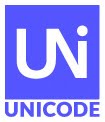The Unicode Technical Committee (UTC) met last week (April 23 to 25) in San Jose, California. Thanks to Unicode member company Adobe for hosting. Here are some highlights from the large number of items that were covered.
Preparing Unicode 16.0 Beta
An important objective was to cover all technical decisions that would be needed for the Unicode 16.0 Beta preview. The Beta will be available for public review and comment on May 21, 2024, and will include all charts, data and annexes for The Unicode Standard as well as other synchronized standards, including UTS 10, Unicode Collation Algorithm, and UTS 51, Unicode Emoji. Also, for the first time, the Beta release will include a complete draft of the core text of the standard.The character repertoire for Unicode 16.0 was slightly adjusted, with the removal of two characters: U+0CDC KANNADA ARCHAIC SHRII and U+0C5C TELUGU ARCHAIC SHRII. These characters were first approved in January 2022 (UTC #170) and assigned for addition in Unicode 16.0 in April 2023 (UTC #175). However, in the ISO process for Amendment 2 of ISO/IEC 10646:2022 (which is to be synchronized with Unicode 16.0), the India national body requested more time for review by experts in India. To avoid a risk of Unicode 16.0 and Amendment 2 of 10646 not being in sync, UTC decided to delay these two characters for a later version.
Various character property (UCD) and algorithm changes were made based on issues reported during the Alpha review or found while the UTC Properties and Algorithms Working Group prepared data files for 16.0. Two notable areas for changes are grapheme cluster segmentation (UAX #29) and line breaking (UAX #14):
- For grapheme clusters, some changes will be made to extended grapheme cluster segmentation for improved handling of orthographic syllables in Indic scripts.
- For line breaking, several changes will be made to data and rules to fix various edge cases, and to incorporate behaviour for hyphens that has already been implemented in CLDR and ICU for several years.
In relation to emoji, the set of new emoji for version 16.0 is unchanged. During the Beta review, the draft update for UTS #51, Unicode Emoji, will include some proposed revisions related to recommendations for display of emoji family combinations. These revisions have not yet been reviewed and approved by UTC, so will require careful review and will be subject to confirmation or change at the next UTC meeting, after the Beta review period is over.
UTC action item backlog
UTC has had a growing backlog of open action items, some over ten years old. For this meeting, the various UTC working groups triaged their action items that were five or more years old, and outcomes were discussed by the UTC. Some action items were completed; some were closed as no longer relevant. Many that required more research were closed as UTC action items and replaced by issues in the relevant working group’s GitHub repo. Note that tracking them in this other way doesn’t necessarily mean they will get higher priority. However, since the working groups are using GitHub issues to organize their regular work, this should bring more attention to these issues. UTC will repeat this process at UTC #181, six months from now.As a side effect of this review of old action items, a document was submitted to UTC (L2/24-123) proposing that UTC transition from the way it has handled action items in the past to tracking issues in a public GitHub repo to allow contributions from a broader set of volunteers. That document identifies some problems and limitations of the existing processes, and suggests that a new process could provide improvements. UTC spent some time discussing this document. It was noted that the idea was valuable, though such a change in processes would not be a small change and would involve some not-so-obvious challenges. It would also be something that affects the Unicode Consortium as a whole, not just UTC. For that reason, this proposal will need to be considered as part of a broader discussion of Consortium processes, resources and infrastructure.
New investigation: automatic space handing at inter-script boundaries
East Asian text often combines different scripts, and a common typographic practice is to insert space between script runs. UTC briefly discussed a new document, L2/24-057, which proposes development of an algorithm for automatic spacing between script runs. The Properties and Algorithms Working Group has assembled experts to discuss this topic. Interested experts are invited to participate in discussion via issues (with "auto-spacing" label) in the public unicodetools repo in GitHub.Adopt a Character and Support Unicode’s Mission
Looking to give that special someone a special something?
Or maybe something to treat yourself?
🕉️💗🏎️🐨🔥🚀爱₿♜🍀
Adopt a character or emoji to give it the attention it deserves, while also supporting Unicode’s mission to ensure everyone can communicate in their own languages across all devices.
Each adoption includes a digital badge and certificate that you can proudly display!
Have fun and support a good cause
You can also donate funds or gift stock




